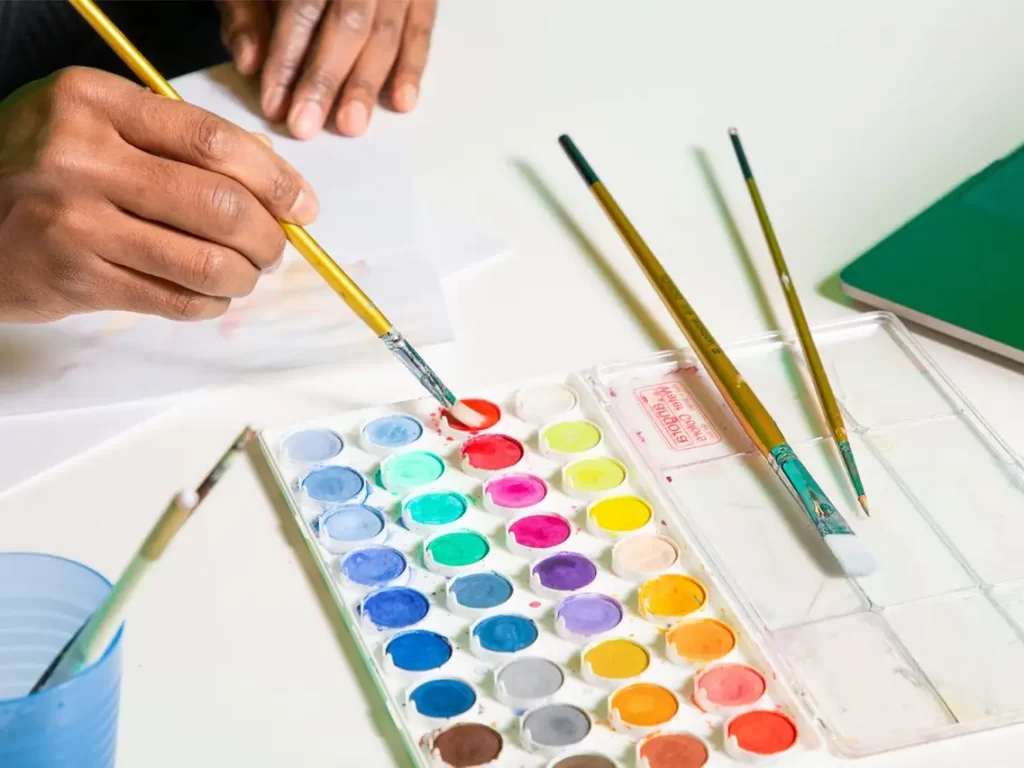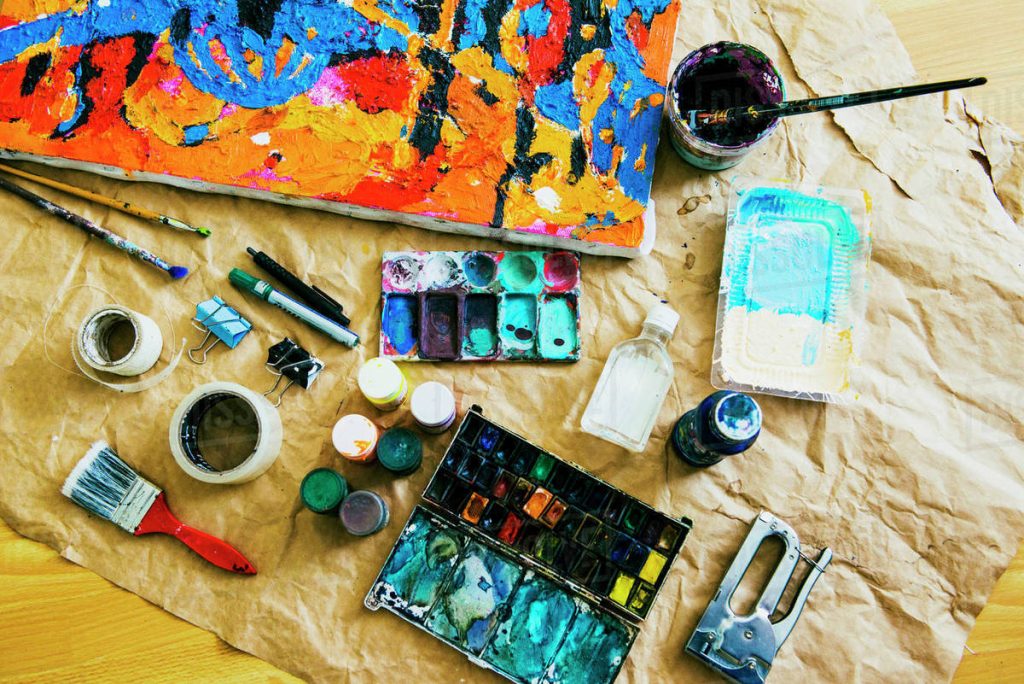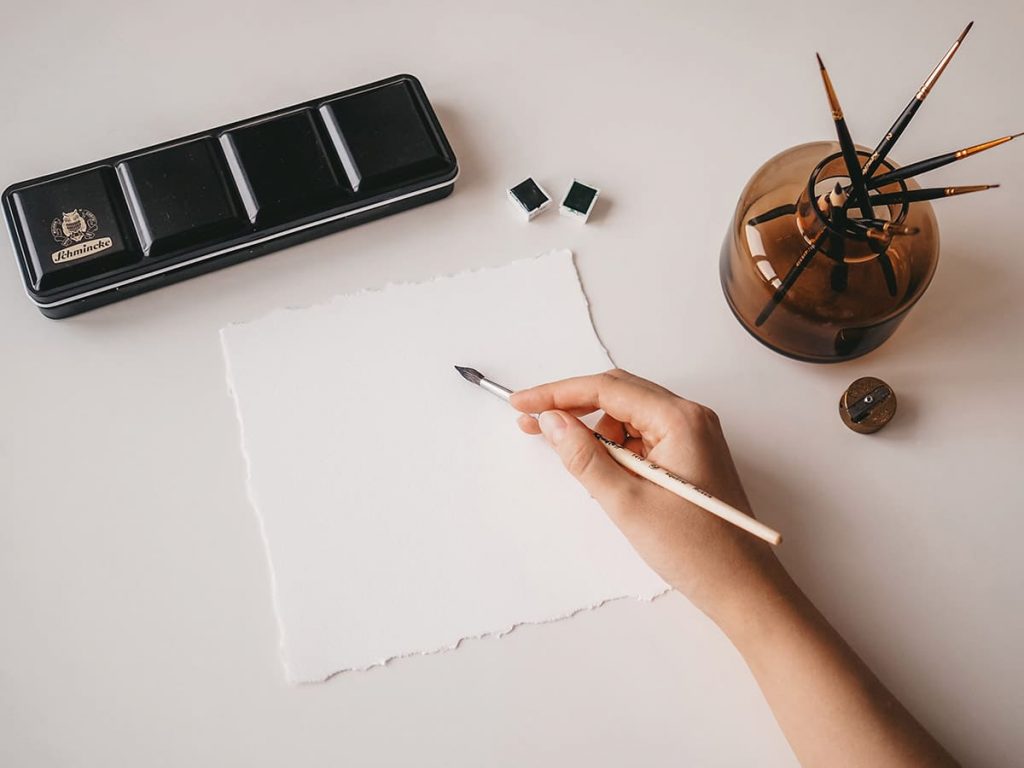Pondering how to bring out your inner artist? Or perhaps you’ve always harboured a secret desire to create that stunning landscape masterpiece? Painting could be the hobby you’re looking for. It’s the perfect hobby for anyone who wants to tap into their hidden skills and channel their creative energy. It’s also an enjoyable pastime to do with the company, such as friends, family or kids, and it’s also a great way to unwind and relax. And getting started is probably easier than you think!
Acrylic Paint Is Great for Beginners
If you’re new to painting, it’s best to start with acrylics paints. This medium is inexpensive, easy to use and will help you get a feel for the basics of creating a painting. Other types of paint require more practice, which may frustrate you if you don’t have the right supplies on hand.

You’ll want to get some non-toxic acrylic paint, in a variety of colours. Acrylic paint can be used on almost any surface and is water-soluble while wet, so it’s good to learn with. It also dries quickly and is long-lasting when dry, which makes it great for beginners to practice with while they learn how to handle paints of different textures and levels of permanence.
Get Your Painting Tools
Painting is a great way to express yourself and relax, but it can also be intimidating if you aren’t sure what supplies to use. There are so many different kinds of tools and brushes available that it can be easy to feel overwhelmed by the choices. Fortunately, there are some basics that every beginner should know about when getting started on this exciting hobby.
Start with a paint tool set that includes multiple brushes, a palette and several hues of paint. This will give you all the tools needed to create something beautiful, even if it takes time to perfect your technique.
One important thing to remember is that there are many different kinds of paint tool set types available. If you are just starting out, choose one that comes with an instructional booklet or video so you can learn about the tools and their uses before getting started.
Palette

An important item to add to your painting supplies is a palette. Some say it’s not essential, but it can make your life easier if you have one, especially if you’re a beginner. A palette will keep your paints from drying out as quickly and help you keep organized as you paint. There are several types of palettes that can be used for acrylic painting, including:
Paper Palette
Paper palettes can be found in most art supply stores and are inexpensive. They are great for beginners because they are easy to use and don’t require much cleanup. Simply squeeze the paint onto the paper palette, mix and paint until finished. When done, simply throw away the paper palette and start fresh with a new one next time.
Wood Palette
Wood palettes can be purchased at any art supply store or online. These palettes are often made of wood and come with a protective cover to keep paints moist between sessions. Wood palettes tend to be more expensive than paper ones, but they last much longer since they can be washed off with water and reused again and again.
Plastic Palette
Plastic palettes are another option for acrylic painters, but I don’t recommend them for beginners because they tend to dry out quickly when used with acrylic paints. Some plastic palettes have built-in wells for mixing colours and others have removable covers that can be used to keep paint from drying out.
Painting Surface
Before you begin painting, you’ll need a surface to paint on. If you’re making a small painting or performing tests, paper towels will do just fine. For larger paintings, though, you’ll want a more durable surface. Some options include:
Watercolour Paper

Watercolour paper is designed for watercolour paintings, but it can be used for other mediums as well. It is available in many different textures and weights (thicknesses), but most beginners will do just fine with 140lb cold press paper. This type of paper has a rough texture which is perfect for holding onto layers of paint while still letting them dry quickly.
Canvas
Canvas is often used in oil and acrylic paintings because it doesn’t buckle like watercolour paper when wet paint is applied to it. However, the canvas can be used with any medium. There are two types of canvas:
- Unprimed canvas – This type of canvas is not sealed, so it absorbs the paint rather than letting it sit on the surface. You can use unprimed canvas straight out of the package if you wish (though some artists prefer to prime their canvases with gesso). Unprimed cotton duck or linen are the best choices for this type of canvas. However, they are more expensive than primed canvases.
- Primed canvas – This type of canvas has been sealed with a layer of gesso so that it resists absorbing the paint. Primed canvases are available in linen and cotton varieties. Linen will last longer and is easier to work on due to its smoother surface.
To Sum Up
Overall, having the right painting supplies at hand can make a big difference in how much fun you have and how successfully you can create your best work. If you don’t think you are artistically inclined, don’t worry – it’s not a requirement to be good at painting! However, don’t be surprised if this hobby quickly becomes a creative passion of yours!